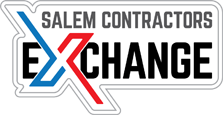Follow Us
10 Street Name, City Name
Country, Zip Code
555-555-5555
myemail@mailservice.com
Work site safety audits are crucial for maintaining a safe and healthy working environment. These audits serve multiple purposes, including identifying potential health, safety, and fire hazards, ensuring compliance with relevant building and fire codes, and assessing adherence to OSHA standards. The following key elements are typically involved in conducting effective work site safety audits:
1. Hazard Identification:
· Evaluate the work site to identify potential hazards related to machinery, equipment, materials, processes, or other factors.
· Assess risks associated with activities, substances, or conditions that may pose a threat to the health and safety of workers.
2. Compliance with Building and Fire Codes:
· Verify that the work site complies with applicable local, state, and national building codes.
· Ensure adherence to fire codes and regulations, including the presence of fire exits, emergency lighting, fire extinguishers, and other safety measures.
3. Regulatory Compliance:
· Assess compliance with OSHA standards, which cover a wide range of workplace safety issues such as hazard communication, electrical safety, machine guarding, and more.
· Identify areas where improvements are needed to meet regulatory requirements.
4. Documentation and Recordkeeping:
· Review and update safety documentation, including safety plans, emergency procedures, and training records.
· Ensure that required safety posters, warnings, and signage are present and accurate.
5. Employee Training:
· Verify that employees have received proper training on safety protocols, emergency procedures, and the correct use of personal protective equipment.
· Identify any gaps in training and recommend additional training programs as needed.
6. Emergency Preparedness:
· Evaluate the effectiveness of emergency response plans and procedures.
· Confirm the availability and functionality of emergency equipment, such as first aid kits and eyewash stations.
7. Inspection of Safety Equipment:
· Inspect and test safety equipment regularly, including fire extinguishers, safety showers, and ventilation systems.
· Ensure that equipment is properly maintained and that any defects are promptly addressed.
8. Communication and Feedback:
· Encourage open communication between management and employees regarding safety concerns.
· Establish a system for reporting and addressing safety issues, near misses, or accidents.
9. Continuous Improvement:
· Use audit findings to develop and implement corrective actions and preventive measures.
· Regularly review and update safety protocols based on lessons learned and changes in regulations.
10.Documentation of Findings: We compile a comprehensive report detailing audit findings, recommendations, and action plans. Share the results with relevant stakeholders and track the progress of corrective actions.
By consistently conducting thorough safety audits, organizations can create a safer work environment, reduce the risk of accidents, and promote the well-being of their employees.
States our online training is valid in: California, Texas, New York, Florida, Pennsylvania, Carolina, Illinois, Ohio, Georgia, Michigan, Washington State, Oregon, Virginia, Arizona, Massachusetts, Tennessee, Indiana, Missouri, Maryland, Wisconsin, Colorado, Minnesota, Alabama, Louisiana, Kentucky, Oklahoma, Connecticut, Utah, Nevada, Hawaii, New Hampshire, Maine, Montana, Rhode Island, Delaware, Dakota, Alaska, Wyoming, and Vermont.
KARM Safety Solutions. All Rights Reserved
All Rights Reserved | KARM Safety Solutions



